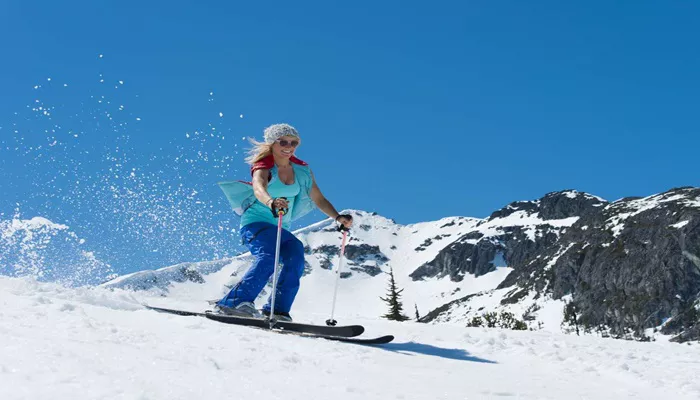Speed brings thrill. But when skiing fast, control becomes crucial. Knowing how to slow down efficiently can prevent injuries, boost confidence, and enhance overall performance. This Skiing Guide dives deep into practical methods for managing high-speed descents. Whether you are a beginner or seasoned skier, mastering these techniques ensures safer, more enjoyable runs. Learn why proper slowing techniques matter, how to use body position effectively, and the safest methods for reducing speed in various terrains. Let’s carve smarter, not just faster.
Why Is It Important to Learn How to Slow Down?
High-speed skiing demands precision. Uncontrolled descents increase accident risks. Proper slowing techniques:
Enhance maneuverability.
Protect joints and muscles.
Prevent collisions with obstacles or other skiers.
Boost confidence, leading to better overall skills.
Understanding Basic Skiing Dynamics
Before learning to slow down, understand fundamental skiing principles:
- Gravity accelerates you downhill
- Edges and friction control your speed
- Body balance impacts response time
Techniques to Slow Down When Skiing Fast
The Power of Edging
Edging involves angling skis to dig into the snow. More edge = more friction = slower speed. To apply:
- Press knees inward
- Angle skis sharply across the slope
- Engage edges fully
Mastering the Hockey Stop
Hockey stops offer immediate deceleration. Steps:
- Turn skis perpendicular to slope direction
- Apply strong edge pressure
- Keep weight centered over skis
Practice gradually. Start slow, then build speed as skill improves.
Using the Snowplow Method
Ideal for beginners or crowded slopes:
- Point ski tips inward, forming a “V” shape
- Apply even pressure to inner edges
- Increase pressure to slow down more quickly
Parallel Turns for Controlled Slowing
Parallel turns use lateral motion to lose speed:
Initiate a wide, carving turn across the hill.
Extend turn radius to decrease momentum.
Focus on smooth, rhythmic turns.
Advanced Techniques for Experienced Skiers
Side Slipping
Slide sideways down the hill:
Keep skis parallel and across the fall line.
Release slight edge grip to slide.
Engage edges when needing to stop sliding.
Speed Checking
Quick edge engagement without a full stop:
Turn slightly across the slope.
Briefly dig edges in.
Continue skiing after shedding some speed.
Body Positioning to Aid in Slowing
Lower Center of Gravity
Stay low to increase stability and control:
- Bend knees generously
- Keep hips flexible and responsive
Upper Body Alignment
Proper upper body form improves reaction time:
- Face shoulders downhill
- Hands positioned forward and out
- Look ahead, not at skis
Environmental Factors That Influence Slowing
Terrain Type
Powder vs. packed snow affects friction. Adjust accordingly. In powder:
- Use wider stances
- Apply gradual turns
On hardpack:
- Sharper edge control needed
- Quicker reactions required
Weather Conditions
Visibility impacts decision-making. In poor conditions:
- Reduce base speed early.
- Use conservative turns.
Common Mistakes When Trying to Slow Down
- Leaning back — reduces control
- Overusing upper body — causes imbalance
- Not committing to edges — results in skidding falls
- Looking down instead of forward — shortens reaction time
Training Exercises to Improve Speed Control
Practice Hockey Stops
Short bursts on gentle slopes build confidence.
Slow-Speed Parallel Drills
Link short, deliberate parallel turns across gentle runs.
Side Slipping Routines
Practice side slipping slowly down blue runs.
Controlled Snowplow Runs
Use snowplow technique purposefully even as an intermediate.
Safety Tips for High-Speed Skiing
Always Scan Ahead
Anticipate terrain changes and obstacles.
Know When to Bail
If control is lost, falling smartly beats crashing uncontrollably. Practice safe falling techniques.
Gear Maintenance
Sharp edges provide better stopping power. Regular tune-ups crucial.
Respect Your Limits
Pushing beyond ability without control invites injury.
When to Seek Professional Help
If difficulty slowing down persists, consult a certified instructor. Lessons fast-track skill improvement.
Conclusion
Learning how to slow down when skiing fast transforms your entire experience. Confidence grows, injuries decline, enjoyment soars. Focus on mastering edging, hockey stops, and parallel turns. Maintain proper body positioning and adapt to terrain and weather. Constant practice, coupled with smart skiing habits, ensures every run is thrilling yet controlled. For a comprehensive Skiing Guide and expert tips, explore further resources. Stay sharp, ski smart, and carve safely!

